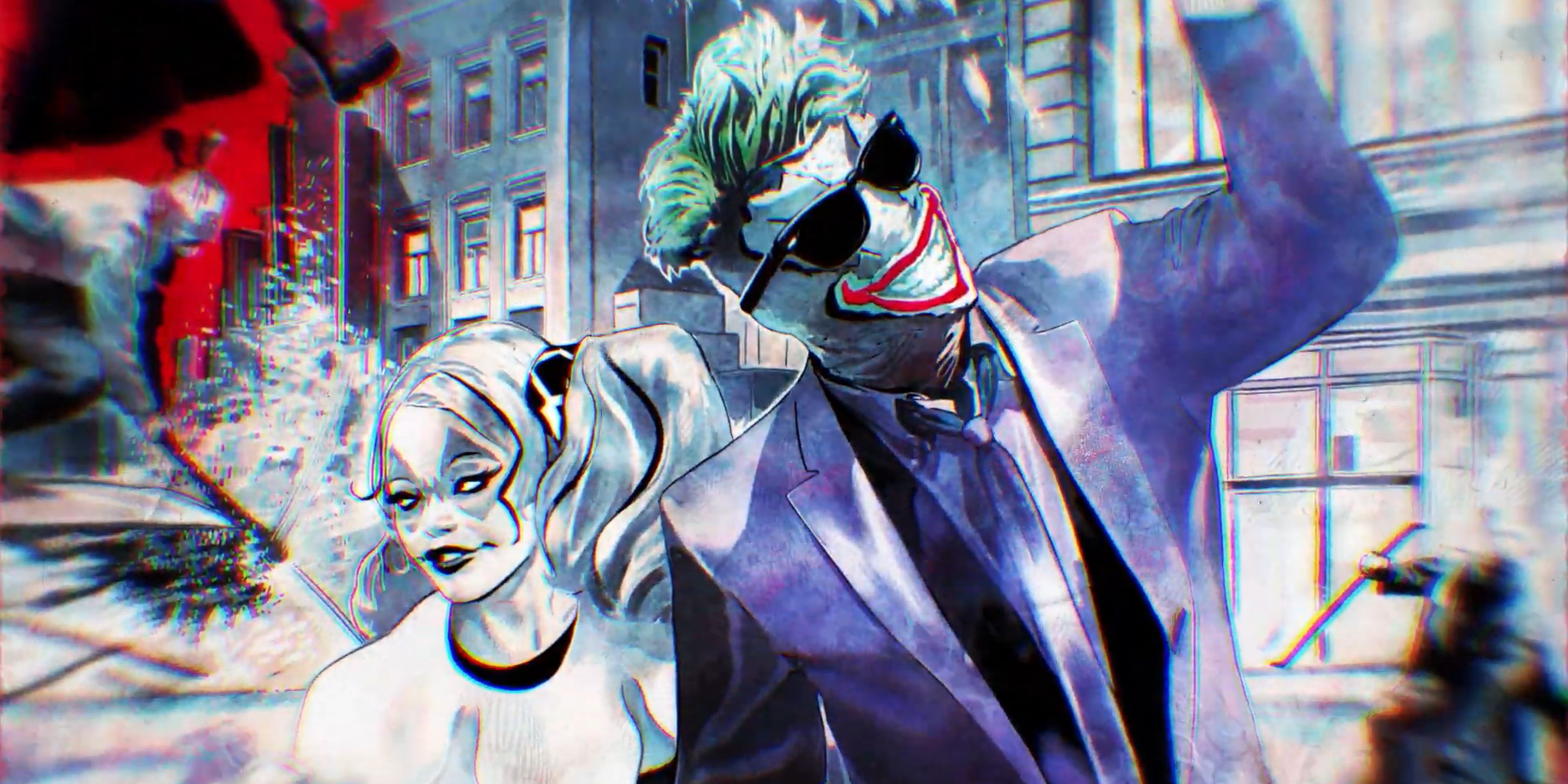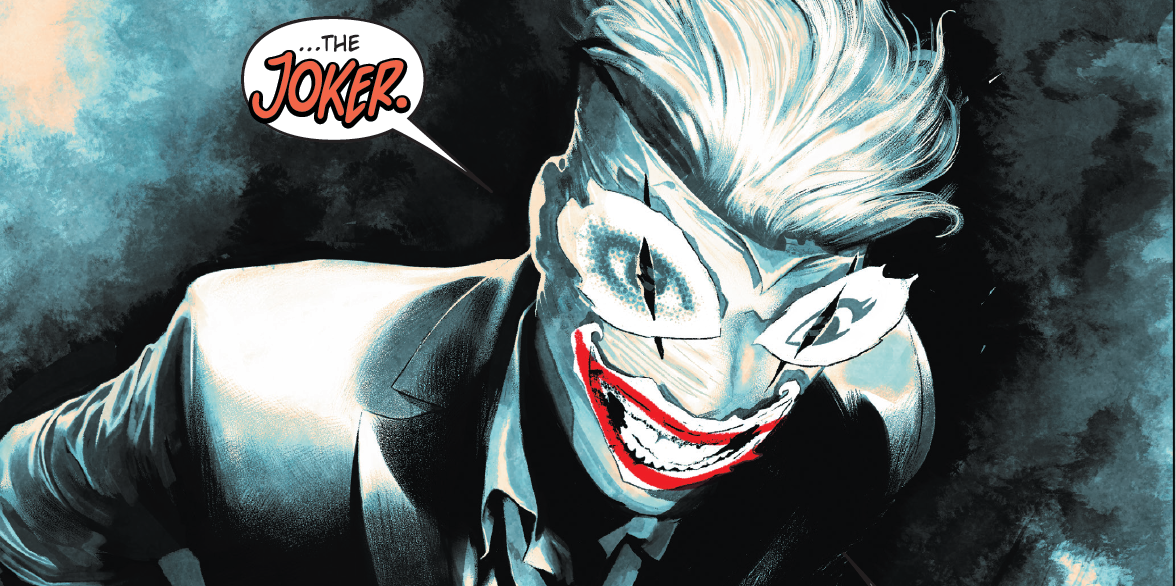WARNING: The following article contains major spoilers for Harley Quinn: Breaking Glass, by Mariko Tamaki and Steve Pugh, available now.
Mariko Tamaki and Steve Pugh's graphic novel Harley Quinn: Breaking Glass retells the origin of the popular antihero as she grows up in Gotham City, making a lot of changes to the key players typically associated with her story. Along the way Harley meets The Joker, for whom she's served as a love interest since her introduction on Batman: The Animated Series. However, Breaking Glass doesn't play it safe by giving readers a classic portrayal of The Joker as an enigmatic adherent to chaos and foil to Batman. Instead, the young-adult graphic novel reimagines the Clown Prince of Crime in a way that begs readers to reconsider the Joker and his place in society.
Created by Bill Finger, Bob Kane and Jerry Robinson, Joker debuted in 1940's Batman #1, the character has undergone a number of different revisions over the years, and his backstory remains murky and, at times, contradictory. As Joker says in Alan Moore and Brian Bolland's The Killing Joke, he prefers his past "to be multiple choice," which results in a lot of uncertainty. Interpretations of the Joker tend to change somewhat depending on the era, but he's most typically a force of anarchy, existing to disrupt society.
Breaking Glass initially depicts Joker as someone dedicated to causing trouble. When he meets Harley, the Joker gives himself an overblown introduction, saying, "I am the new justice. The New World Order. I am chaos." He then appeals to Harley's destructive side and thirst for revenge against those who have wronged her and those she cares about to get her to go along with his plans. However, toward the end of the book, the Joker's true identity is revealed as that of John Kane, one of Gotham's wealthiest young men.
Prior to that reveal, John spends much of Breaking Glass attempting to uphold the status quo. One of the key ways he does this in Breaking Glass is through his film club, in which he shows works exclusively by male auteurs, and genres steeped in hyper-masculinity. His attitude toward female directors is condescending, and he challenges Ivy to name one worthy of study. She does, and John blows her off.
Ivy and Harley disrupt one of his screenings to protest his clearly exclusionary choices -- an act that introduces chaos to a controlled setting, which would make many traditional interpretations of the Joker proud -- and John reacts by bringing in the school's principal to help him maintain the status quo. His continued dominance over the screenings is due in part to him being wealthy enough to pay for them. Despite professing to be the embodiment of chaos, John actively works against forces trying to introduce change when it benefits him to do so and when his authority is being challenged.
Throughout the book, John does engage in acts of violence. However, Breaking Glass is a book deeply concerned with the consequences of actions, and Kane's destruction of property isn't as simple as it appears. Millennium Enterprises, which is headed by the Kanes, spends much of the book buying up property. One such building houses the drag show of Mama, Harley's caretaker. During a performance, one of the windows of Mama's establishment is broken. The next day, the Kanes arrive and reveal the building is now condemned, with the implication being it's due to the damage, because on the previous day Mama faced eviction due to a rent increase.
The Joker does do damage to businesses associated with Millennium Enterprises, but many more are targeted, meaning he's also hitting people who live in the area. Over the course of Breaking Glass, more businesses are condemned, paving the way for Millennium Enterprises to take over the area, which directly benefits the Kane family. Even Joker's seeming acts of chaos work to empower himself and those who are already powerful.
The book's climax sees Joker attempting to blow the top off Kane Tower, knowing that doing so would crush the protestors below who oppose Millennium Enterprises. Joker also reveals he plans to frame Harley for the destruction. Ivy later observes John wanted to paint the protesting community as criminals "so [the Kanes] could justify kicking us out of our neighborhood." Although Harley does protect the protestors, John's action was intended to actually help Millennium Enterprises by painting its opponents in a negative light.
All of John's so-called chaos serves to reinforce existing power structures, and Harley rightly observes in the pair's last interaction, "I think you're no chaos person. You're just a John Kane." He seems to agree with the sentiment, saying he's shocked she didn't figure it out sooner. However, there's something profound in Harley's words, as her language implies he's more than just an anomaly.
Instead, John is the product of a system in which some are empowered to do what they like regardless of consequences because of wealth, power and demographics. John Kane is a type, rather than just a person. John doesn't have any interest in actually changing the status quo. He's every powerful person who hurts other people because he can, because it benefits him and because he sees those who aren't as privileged as less than himself; he thinks his advantages mean he can get away with it.
And he does, at least in a way. While Harley gets a public defender, John hires a high-priced lawyers. Their bail is set at the same amount, but John is wealthy enough that this means he returns home under house arrest. In her last conversation with Harley, Ivy notes bail wouldn't be an option if John had been from the same community as her. Regardless of whether John would have been convicted, his house arrest leads to him seemingly going on a new rampage as Joker. The justice system treating a man who attempted to blow up a building lightly will result, invariably, in more destruction.
In traditional Batman comics Joker represents chaos, but Tamaki and Pugh's Joker represents privilege, as his ability to create chaos is directly linked to his privilege. Their Joker is every privileged person who breaks the law and gets a sentence demonstrably lighter than others because of the benefits afforded him by class and race. John Kane is every man whose privilege results in his trial ending in a slap on the wrist and a judge saying there's no point in ruining a young man's life while his victim still struggles with the fallout of his actions. That's what makes Tamaki and Pugh's Joker the perfect villain: He's real.
Harley Quinn: Breaking Glass is available in comics stores now. The graphic novel releases in bookstores on September 3.


